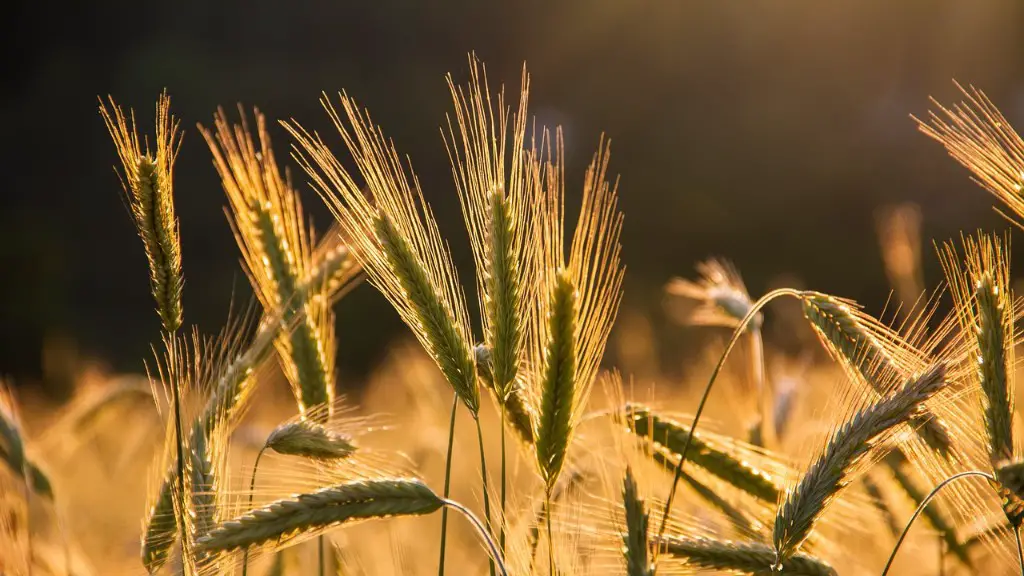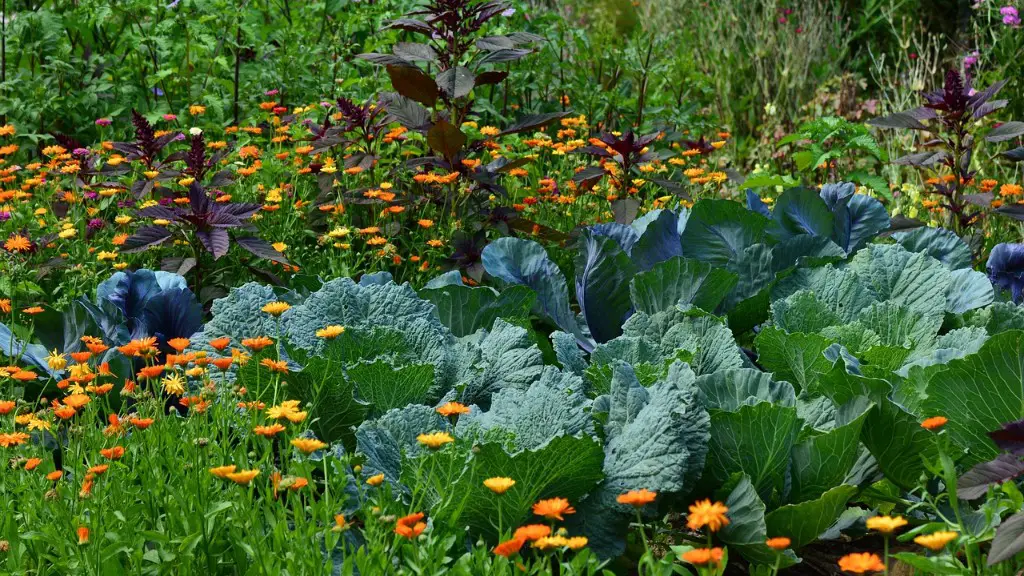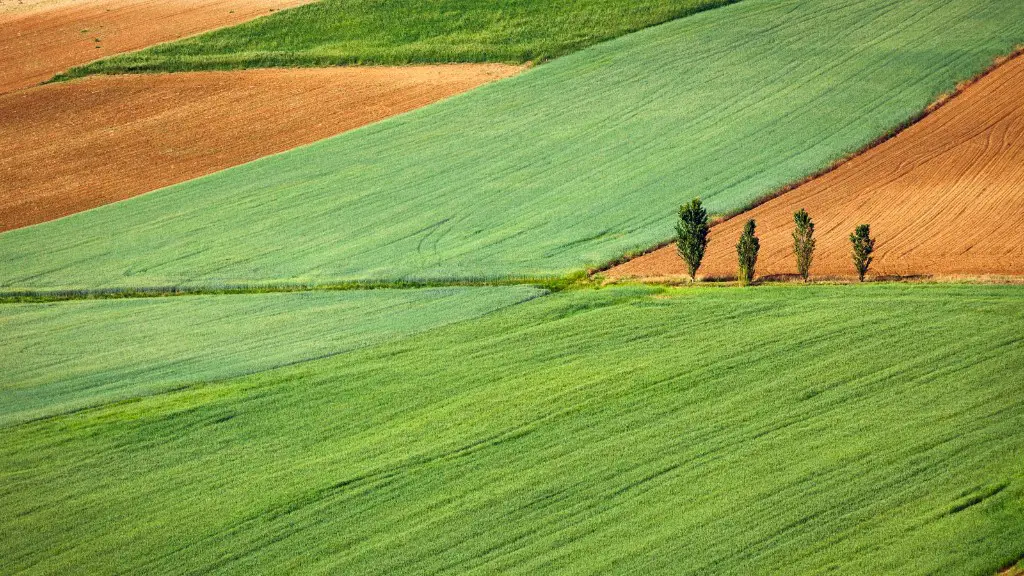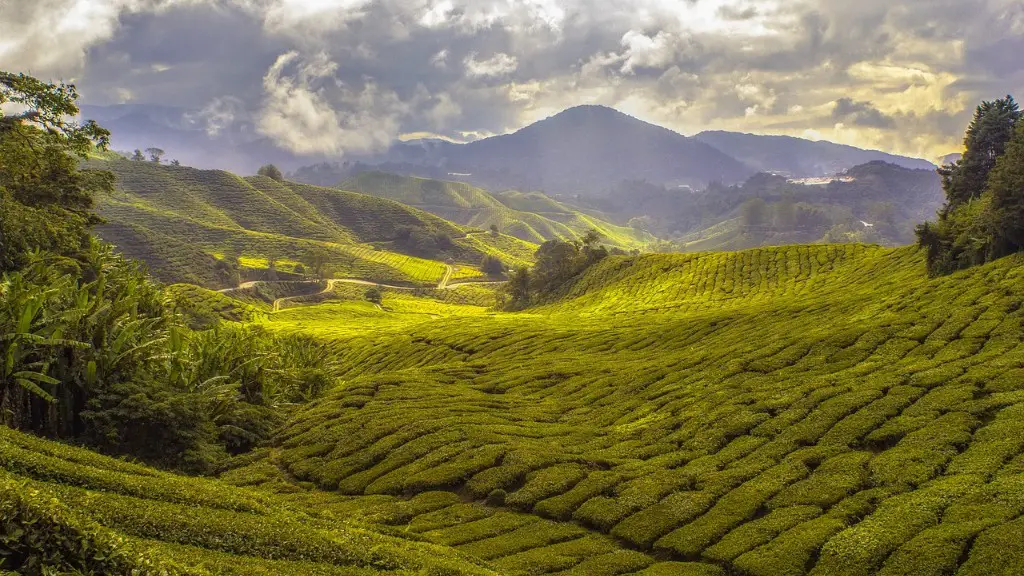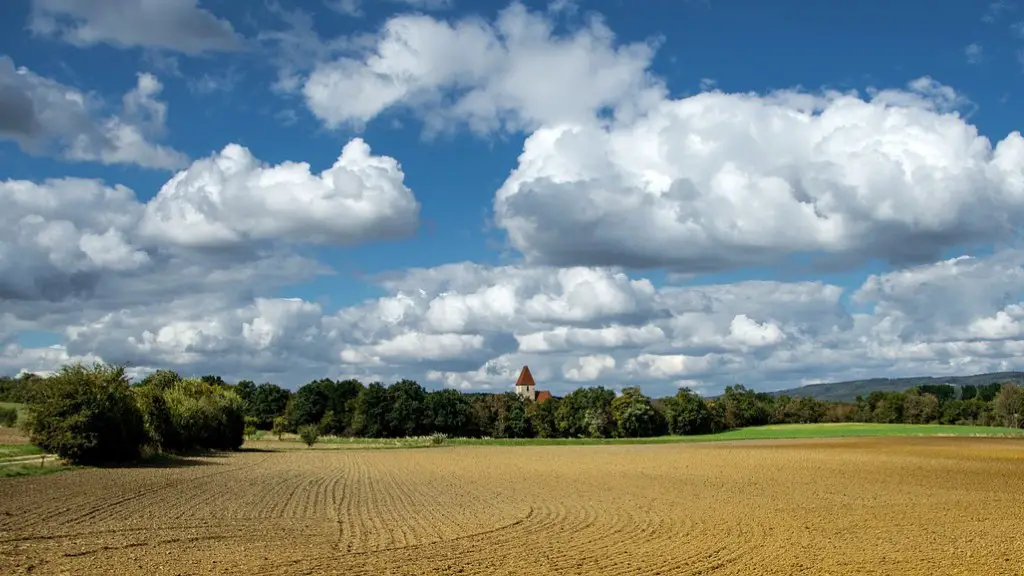The modern agriculture is a production system that has been developed to increase the efficiency and productivity of food production. The system uses a variety of techniques, including advances in technology, science, and engineering, to achieve these objectives.
The modern agriculture is the process of farming that involves the use of advanced technology and equipment in order to increase the yield. It includes the use of new methods of irrigation, planting, and mechanization.
What is type of modern agriculture?
Agribusiness is a type of modern farming that focuses on the production of crops and livestock for sale. It is typically conducted on a large scale and involves the use of modern technology and machinery.
Intensive farming is another type of modern farming that seeks to maximize production through the use of high-yielding crops, irrigation, and other methods. This type of farming can be very demanding on the environment and can lead to soil degradation and water pollution.
Organic farming is a type of modern farming that focuses on using natural methods to grow crops and rear livestock. This type of farming does not use synthetic pesticides or fertilizers and instead relies on crop rotation, composting, and other natural methods to maintain soil fertility and control pests.
Sustainable agriculture is a type of modern farming that seeks to minimize the impact of agriculture on the environment. This type of farming uses methods such as crop rotation, cover crops, and integrated pest management to reduce the need for synthetic inputs.
Farm automation technology is becoming increasingly popular as farmers strive to address issues like a rising global population, farm labor shortages, and changing consumer preferences. Some of the most commonly used technologies include harvest automation, autonomous tractors, seeding and weeding, and drones. While each technology has its own set of benefits, they all work together to help farms become more efficient and productive.
What is the goal of modern agriculture
Modern farming and ranching practices aim to harvest the largest crop per acre or the most meat, milk or eggs per animal, while conserving natural resources and meeting the demands of a growing global population. Most food and fiber production in the United States today employs modern techniques. These practices have led to increased yields and more efficient use of resources, helping to meet the needs of a growing population.
The Green Revolution was a huge success in many ways. It increased food production, improved crop yields, and helped to alleviate poverty and hunger in many developing countries. However, it also had some negative impacts, including environmental degradation and the displacement of small farmers.
What are the 4 modern methods of agriculture?
Modern farming methods are constantly evolving to keep up with the demands of a growing population. New techniques and technologies are being developed all the time to increase yields and improve efficiency.
Aeroponics is one of the newer methods of modern farming. It involves growing plants in an air or mist environment, without the use of soil. This method is said to be more efficient than traditional methods, as it uses less water and fertilizer.
Aquaponics is another modern method that is gaining popularity. This technique combines fish farming with hydroponics, to create a symbiotic system where the waste from the fish is used to fertilize the plants. This is a more sustainable way of farming, as it reduces the need for external inputs.
Hydroponics is another soil-less method of modern farming. In this system, plants are grown in a nutrient-rich solution instead of soil. This allows for a more controlled environment, and can increase yields.
Monoculture is a type of farming where a single crop is grown in large quantities. This method of farming is very efficient, but can be damaging to the environment if not managed properly.
Tissue culture is a method of growing plants from small pieces of tissue. This is
The Neolithic Revolution was a period of time in which agriculture was developed and began to be used by humans. This time period was around 12,000 years ago and caused such a change in society and the way in which people lived. Hunter-gatherer lifestyles were no longer possible and people had to settle down in one place. This allowed for the development of civilizations and the growth of cities.
What is the impact of modern agriculture?
Agriculture is a leading cause of many environmental issues that contribute to environmental degradation. These includes: climate change, deforestation, biodiversity loss, dead zones, genetic engineering, irrigation problems, pollutants, soil degradation, and waste. While some of these environmental issues are caused by other industries, agriculture is a major contributor and often blamed for these problems. In order to help mitigate these issues, farmers and agricultural organizations must work to promote sustainable practices. This includes reducing pesticide and herbicide use, planting trees and other plants to help combat climate change, protecting natural habitats, and using irrigation and fertilization practices that don’t degrade the quality of soil and water.
Modern farming methods rely heavily on the use of high yielding varieties of seeds, chemical fertilizers and pesticides, and plenty of water for irrigation. These techniques have helped to increase food production in many parts of the world, but they have also contributed to environmental problems such as soil erosion, water pollution and the decline of biodiversity.
What are the difference between traditional and modern agriculture
There are numerous differences between traditional and modern farming methods. Traditional farms are typically small family-owned operations that use manual labor and simple tools. Modern farms, on the other hand, tend to be large commercial businesses that use sophisticated machinery and technology. This results in greater efficiency and higher yields. Additionally, modern farms often employ practices such as monocropping and factory farming, which can have negative environmental impacts.
Agricultural productivity refers to the rate of output per unit of input in agriculture. The field of agricultural productivity focuses on both land productivity, such as the yield of major crops per hectare, and labour productivity, such as the number of farm workers needed to produce a given quantity of crop. Improving agricultural productivity is essential to meeting the challenges of global food security.
Looking at the history of agricultural productivity, we see that there have been significant increases in productivity over time. The Green Revolution of the 1940s and 1950s saw a dramatic increase in agricultural productivity in many parts of the world, thanks to new strains of crops and improved irrigation and farming techniques.
Since then, there have been more gradual increases in productivity, as farmers have continued to adopt new technologies and practices. In recent years, there has been a renewed focus on improving agricultural productivity, as the world’s population continues to grow and the amount of arable land is limited.
There are a number of ways to improve agricultural productivity. Many of these involve improving the efficiency of inputs, such as water and fertiliser. Others focus on improving farming practices, such as crop rotation and the use of cover crops. Still others focus on increasing the resistance of crops to pests and diseases
What are some examples of modern agriculture?
Modern farming methods in India have evolved over the years to include a variety of techniques that make use of less soil and water. Two of the most popular methods currently in use are aeroponics and hydroponics.
Aeroponics is a method of growing plants without the use of soil in an air or mist environment. This method is said to use up to 95% less water than traditional methods, and can be used to grow a variety of plants and vegetables.
Hydroponics is another popular method of farming that uses less soil and water. This method involves growing plants in a water-based solution that is rich in nutrients. Hydroponics is said to use up to 50% less water than traditional methods, and can also be used to grow a variety of plants and vegetables.
Both aeroponics and hydroponics are efficient methods of farming that can be used to produce a high yield of crops. These methods are also said to be more environmentally friendly than traditional methods, as they use less water and soil.
GIS software and GPS are important tools for farmers to map and monitor their crops. Satellite imagery can be used to assess crop health and yield, and drones can be used to get a close-up view of the crops. Farming software can help farmers keep track of data such as soil moisture and crop yields. Online data can be used to find information on prices, weather, and market trends.
What is modern agriculture system very short answer
The term “modern agriculture” often refers to industrial agriculture, which is a system of farming that relies heavily on technology and mechanization. In modern agriculture, crops are grown in large fields using specialized equipment and techniques, and animals are raised in controlled environments. This type of farming is designed to maximize efficiency and output, and it has led to significant increases in food production. However, it has also generated some environmental and social concerns.
The future of agriculture is looking very bright, with many innovative new technologies on the horizon. Here are 10 of the most exciting agriculture tech trends to watch out for in the coming years:
1. Bee vectoring technologies – Using bees to deliver pest-control agents directly to crops could be a game-changer for agriculture.
2. Precision agriculture – Using sensors and GPS technology to map and manage crops on a very precise level will become more and more commonplace.
3. Indoor vertical farming – This efficient and space-saving type of farming will continue to grow in popularity.
4. Livestock farming technology – From robotic milking machines to DNA tracking, there are many exciting new developments in livestock farming.
5. Laser scarecrows – These could provide an environmentally-friendly way to keep birds and other pests away from crops.
6. Farm automation – More and more farm tasks will be performed by machines, freeing up farmers’ time for other activities.
7. Real-time kinematic (RTK) technology – This highly accurate GPS technology will become increasingly important for precision agriculture.
8. Minichromosome technology – This could be used to create more disease-
Who invented modern agriculture?
Norman Borlaug was an American agronomist who led initiatives worldwide that contributed to the extensive increases in agricultural production termed the Green Revolution. He is considered by many to be the “father of the Green Revolution”, and is credited with saving millions of lives.
Modern agriculture has become heavily reliant on synthetic fertilizers containing nitrogen and phosphorus in order to increase the number of people the world’s farms can feed. While these chemical inputs have been at the heart of intensified farming since World War II, they have also resulted in negative environmental impacts such as water pollution and eutrophication. As we continue to face pressure to increase food production to meet the needs of a growing population, it is essential that we find ways to reduce our reliance on synthetic fertilizers.
Conclusion
Modern agriculture is an agricultural production system that combines Scientific and technological advances with an understanding of the natural systems that affect agricultural ecosystems.
The modern agriculture is the application of scientific knowledge and technology to farming. It is also the branch of agriculture that deals with the production of food crops, livestock, and other agricultural products. The modern agriculture has helped to increase the productivity of farms and to improve the quality of food.
